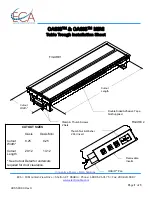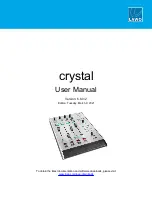
Chapter 2
Page no. 22
2-intro.fm
GE Healthcare
Senographe DS Acquisition System
Revision 1
Operator Manual 5307907-3-S-1EN
Introduction
8
Conventions for this manual
8-1
Typographical
•
In text describing the user interface,
italic
and
bold
characters are used to differentiate between body
text and on-screen or hardware captions and labels, entered text, etc.:
-
Italics are used for references to hardware items and text which appears on-screen (e.g., menu
titles, button labels, on-screen messages, etc.).
-
Bold face is used when specific instructions are given for the entry of text or selection of a menu
option, etc. If the operation or text entry includes the use of a keyboard or mouse button, its name
is shown between angle brackets, to distinguish it from entered text, e.g.,
123<Enter>
would be
written for an instruction to type
123
followed by the
Enter
or
Return
key.
•
In other text:
-
Italics are used when a specific concept is introduced.
-
Italic and bold characters may also be used for local emphasis.
-
Blue italics are used for cross references.
8-2
Definitions
The various safety and cautionary notes throughout this manual are defined as follows:
DANGER
Indicates an imminently hazardous situation that, if not avoided, will result in death or
serious injury.
WARNING
Indicates a potentially hazardous situation that, if not avoided, could result in death or
serious injury.
CAUTION
Indicates a potentially hazardous situation that, if not avoided, may result in minor or mod-
erate injury.
! Notice:
Used for instructions to the user to prevent damage to property.
Note:
Used to draw attention to information that is important for the user to know.
FOR
TRAINING
PURPOSES
ONLY!
NOTE:
Once
downloaded,
this
document
is
UNCONTROLLED,
and
therefore
may
not
be
the
latest
revision.
Always
confirm
revision
status
against
a
validated
source
(ie
CDL).
















































